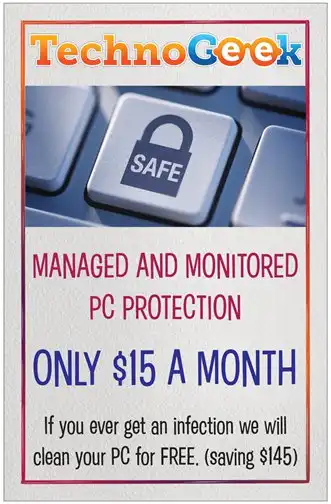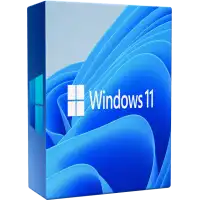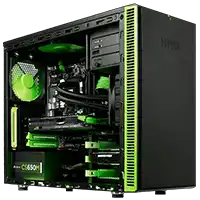TechnoGeek Kallangur: 3D Printing Services
Exactly what you require.
We own 2 3D printers capable of running at 9k and 12k for high detailing.
Professional 3D Printing Services
We take great satisfaction in offering top-notch 3D printing services at cost-effective prices.
Providing all your 3D Printing Services by Technogeek
At Technogeek, we offer top-tier 3D printing services for all your Warhammer and Dungeons & Dragons needs, powered by two state-of-the-art resin printers. Based in North Lakes and proudly servicing the entire region from Caboolture to Aspley, Kallangur to Murrumba Downs, Redcliffe to Dakabin, we bring your tabletop dreams to life with precision and unmatched detail.
Our cutting-edge Saturn 3 Ultra printer, boasting an incredible 12k resolution, ensures every miniature, terrain piece, and custom model is captured in stunning clarity, perfect for those who demand the highest level of detail. Alongside it, we use the Mars 5 Ultra with 9k resolution, providing crisp, intricate prints that are both durable and beautifully detailed. Whether you're commanding vast Warhammer armies or crafting immersive D&D campaigns, our 3D prints deliver professional-grade results every time.
From character models to bespoke game accessories, we work closely with you to create personalised, high-quality items that are tailored to your specific needs. Our resin printing technology produces smooth finishes, sharp details, and durable pieces, ensuring your models stand out on the battlefield or in the heat of your next dungeon crawl.
Choose Technogeek for all your 3D printing needs and experience fast, reliable service from a local expert. Let us bring your tabletop adventures to life with precision-crafted models that match your imagination.
3D PRINTING AT AN AFFORDABLE PRICE
In addition to our premium 3D printing services, Technogeek also offers professional painting for all our printed models, ensuring your miniatures and game pieces look as stunning as they play. We pride ourselves on offering some of the most competitive prices around, with many D&D and Warhammer miniatures starting at just $3 each. Having printed and painted a vast array of models, we're ready to bring your tabletop creations to life without breaking the bank.
Custom Creations: Your Vision, Our Expertise in Small to Medium Scale
3D Printing Excellence



Cost-Effective Services: From Miniatures to Unique, One-of-a-Kind Products
D&D: 3D PRINT DUNGEONS & DRAGONS (DND) PIECES
Forget the limited options at your local shop or online store; 3D printing platforms offer a whole universe of designs and items waiting for your perusal. The real game-changer? You get to tailor your own creations to fit your vision perfectly. So, if none of those female halfling bard designs quite hit the mark, it's time to flex your creative muscles and start designing!
For those dipping their toes into the world of D&D, there's a whole array of essential components to keep in mind. Think of it like this: as you venture through new realms and face off against various adversaries, things like terrain, props, hazards, and monsters become vital to the experience.
Now, let's dive into the goodies you can conjure up with 3D printing:
Miniatures:
Picture this – your heroes, villains, pivotal NPCs, or even the odd critter, all brought to life in intricate detail.
Terrain and Props:
From quaint little water wells and spooky stalagmites to versatile dungeon tiles and rustic crates, you name it, you can print it. Got a vision of your dungeon nestled within the hull of a mighty ship? Well, why not bring it to life, piece by piece?
Traps:
What's more devious than a horde of monsters? How about a sinister statue that unleashes an energy beam until your heroes crack the code? Meet the Statue of Minds – the epitome of creative torment. And the best part? It can take any shape or form your twisted imagination desires!
Dice:
Every D&D aficionado knows the importance of the dice – those trusty polyhedral tools that determine fate. From d4s to d20s, each roll adds a touch of drama to the tale. And let's not forget the thrill of rolling percentile dice (2d10) for those clutch moments.
Dice Towers:
Ah, the humble dice tower – a fortress of randomness and fairness. Drop your dice in, watch them dance across hidden platforms, and await their fate as they tumble down to reveal your destiny.
Other Goodies:
DM screens, dice boxes, dice trays – these aren't just accessories; they're badges of honor for the true D&D devotee. So go ahead, flaunt your nerdiness with pride!
File Sources, Builders, & Tools
Thanks to the massive fan base of D&D, finding D&D files online is easier than casting a cantrip. Here are a few hotspots where you can snag those coveted files, along with some tips to make working with them a breeze.
Sources
Thingiverse:
Check out Thingiverse – it's like the ultimate treasure trove for 3D models, especially when it comes to beefing up your D&D stash. With thousands of designs up for grabs, you're bound to find something that tickles your fancy.
And then there's MyMiniFactory, another gem in the 3D printing realm. Think of it as your trusty sidekick to Thingiverse, offering up a plethora of goodies ready to bring your imagination to life.
MyMiniFactory:
Alongside Thingiverse, MyMiniFactory is another go-to source for just about anything you might want us to print for you.
Builders
Hero Forge :Ever dreamt of bringing your own characters to life? Well, meet Hero Forge – your one-stop-shop for crafting custom characters straight out of your imagination.
Here's the deal: Hero Forge covers a whole spectrum of genres, from fantasy realms and wild west showdowns to futuristic sci-fi epics and modern-day dramas. Oh, and let's not forget the allure of East Asian aesthetics. Plus, they're constantly adding new design elements to keep things fresh and exciting.
Now, here's the catch: while Hero Forge offers an incredible array of customization options, you'll need to shell out a small fee to get your hands on the final file.
Desktop Hero: But wait, there's more! Enter Desktop Hero, another player in the custom character modeling game. Like its counterpart Hero Forge, Desktop Hero lets you dive into the world of character creation with ease.
The drill is pretty much the same: pick your genre, tinker with the elements, and voila – your character springs to life before your eyes. The only difference? Desktop Hero boasts its own unique selection of elements to play with.
So, here's the plan: why not give both platforms a whirl and see which one tickles your fancy? After all, when it comes to bringing your dream characters to life, the more options, the merrier!
This platform specialises in customizing your own characters.
Different genres, including fantasy, western, sci-fi, modern, and east-Asian, are available on the platform, with new design elements constantly being added.
Just know that you will have to pay a small fee to obtain your file.
RANGE OF OUR REPAIR SERVICES
NORTH LAKES & KALLANGUR COMPUTER & LAPTOP SERVICES
Email Us
Slightly delay may occur due to A.I. Spam Combat
Please refresh if timeout has occured.

FIXED FEE WORKSHOP & REMOTE SERVICES
Office Address
13 Stokes Street North Lakes
Office Hours
WEEKDAYS: 8am to 6:30pm
SAT: 9am to 12pm
CLOSED SUNDAYS & PUBLIC HOLIDAYS




